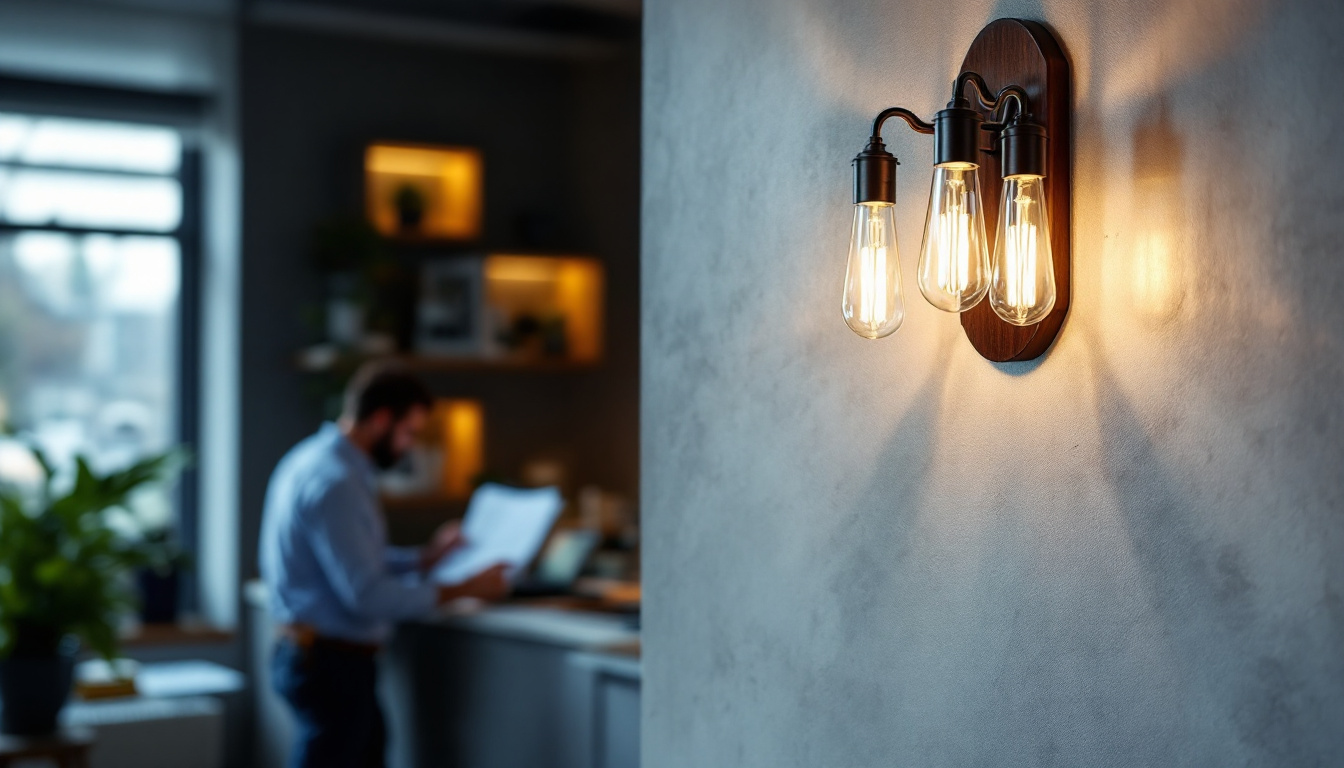
As a lighting contractor, understanding the intricacies of ballasts is essential for ensuring optimal performance and efficiency in lighting systems. Ballasts play a critical role in controlling the electrical current that flows through fluorescent and HID lamps, making them a fundamental component in various lighting applications. This article delves into the different types of ballasts, their functions, and practical tips for lighting contractors to master their use.
Ballasts are devices that regulate the current to lamps, providing the necessary voltage to start and maintain the light output. They are particularly important for fluorescent and high-intensity discharge (HID) lamps, which require a specific amount of current to operate effectively. Without a ballast, these lamps would not function properly, leading to flickering or complete failure.
In essence, ballasts serve two primary functions: they limit the amount of current flowing through the lamp and provide the initial voltage needed to start the lamp. This dual role is crucial for the longevity and efficiency of the lighting system. The technology behind ballasts has evolved significantly over the years, with advancements leading to more compact designs and improved energy efficiency. This evolution has made it easier for manufacturers to create ballasts that not only meet the needs of traditional lighting systems but also adapt to modern demands for energy conservation.
Properly functioning ballasts are vital for maintaining the performance of lighting systems. When ballasts fail, it can lead to a range of issues, including reduced light output, increased energy consumption, and even damage to the lamps themselves. Understanding how to select and install the right ballast can significantly impact the overall efficiency of a lighting project. For instance, using an electronic ballast instead of a magnetic one can result in a quieter operation, less flicker, and improved energy savings, which can be particularly beneficial in commercial settings where lighting plays a crucial role in productivity.
Moreover, with the growing emphasis on energy efficiency and sustainability, selecting the right ballast can also contribute to reducing energy costs and meeting regulatory requirements. This makes it essential for lighting contractors to stay informed about the latest ballast technologies and options available in the market. Additionally, the integration of smart technology into ballasts is becoming increasingly common, allowing for features such as dimming capabilities and remote monitoring. This not only enhances user control over lighting conditions but also supports the broader goals of smart building initiatives, where energy management and operational efficiency are prioritized. As such, understanding the nuances of ballast technology is not just a matter of functionality, but also of aligning with contemporary trends in energy management and sustainability practices.
There are several types of ballasts available, each designed to work with specific types of lamps. The most common types include magnetic ballasts, electronic ballasts, and smart ballasts. Understanding the differences between these options is key to making informed decisions on lighting projects.
Magnetic ballasts are the traditional type of ballast used in fluorescent lighting systems. They operate using electromagnetic induction and consist of a coil and a core. While they are known for their reliability and simplicity, magnetic ballasts tend to be less energy-efficient compared to their electronic counterparts.
One of the main drawbacks of magnetic ballasts is their weight and size, which can pose challenges during installation. Additionally, they may produce a noticeable hum and flicker, which can be distracting in certain environments. However, they are still widely used in many applications due to their robustness and lower initial cost.
Electronic ballasts have gained popularity in recent years due to their energy efficiency and compact design. They use electronic circuitry to regulate the current and voltage supplied to the lamps, resulting in better performance and reduced energy consumption.
One of the significant advantages of electronic ballasts is their ability to operate lamps at higher frequencies, which eliminates flickering and reduces noise. This makes them an ideal choice for environments where lighting quality is paramount, such as offices, schools, and retail spaces.
Smart ballasts represent the latest advancement in ballast technology. These devices incorporate wireless communication capabilities, allowing them to be integrated into smart lighting systems. Smart ballasts can be programmed to adjust light levels based on occupancy, daylight availability, or specific user preferences.
By utilizing smart ballasts, lighting contractors can offer clients enhanced control over their lighting systems, leading to improved energy savings and user satisfaction. As the demand for smart building technologies continues to rise, understanding how to implement smart ballasts will become increasingly important for lighting professionals.
Selecting the appropriate ballast for a lighting project involves several considerations. Factors such as lamp type, application, energy efficiency, and budget all play a role in the decision-making process. Here are some key points to keep in mind when choosing a ballast.
The first step in selecting a ballast is to identify the type of lamp being used. Each lamp type has specific requirements regarding voltage and current, which must be matched with the correct ballast. For instance, fluorescent lamps typically require either magnetic or electronic ballasts, while HID lamps may require specialized ballasts designed for their unique operating conditions.
It is also important to consider the wattage of the lamp, as this will dictate the ballast’s power rating. Using an incompatible ballast can lead to poor performance and reduced lamp lifespan.
Energy efficiency is a critical consideration in today’s lighting projects. Electronic and smart ballasts generally offer higher efficiency compared to magnetic ballasts. When selecting a ballast, it is advisable to look for models that are ENERGY STAR certified or meet other energy efficiency standards.
In addition to reducing energy costs, choosing energy-efficient ballasts can also contribute to sustainability goals and help clients achieve green building certifications.
Cost is always a factor in any lighting project. While electronic and smart ballasts may have a higher upfront cost compared to magnetic ballasts, their long-term energy savings and performance benefits can outweigh the initial investment. It is essential to communicate these benefits to clients to help them make informed decisions.
Additionally, consider the total cost of ownership, which includes installation, maintenance, and energy costs over the lifespan of the ballast. A more expensive, energy-efficient ballast may ultimately provide better value in the long run.
Proper installation of ballasts is crucial for ensuring optimal performance and longevity. Here are some tips for lighting contractors to keep in mind during the installation process.
Each ballast comes with specific installation instructions provided by the manufacturer. It is essential to follow these guidelines closely to ensure a successful installation. This includes wiring diagrams, mounting requirements, and any safety precautions that need to be observed.
Failure to adhere to manufacturer instructions can result in poor performance, reduced lifespan, or even safety hazards. It is advisable to familiarize oneself with the product specifications before starting the installation process.
Correct wiring is critical for the safe and efficient operation of ballasts. Before connecting the ballast to the lamp and power source, double-check all connections to ensure they are secure and correctly configured. Loose or incorrect wiring can lead to flickering lights, reduced efficiency, or even electrical shorts.
Using wire connectors and electrical tape can help ensure secure connections. Additionally, it is important to use the appropriate gauge of wire as specified by the ballast manufacturer to avoid overheating and potential failure.
Once the ballast is installed, it is essential to test the entire lighting system to ensure everything is functioning correctly. This includes checking for proper light output, ensuring there are no flickers or unusual noises, and verifying that all components are operating within their specified parameters.
Conducting a thorough test not only ensures the satisfaction of the client but also helps identify any potential issues that may need to be addressed before completing the project.
Regular maintenance and troubleshooting are essential for keeping ballasts and lighting systems in optimal condition. Understanding common issues and their solutions can help lighting contractors address problems quickly and effectively.
Some common issues associated with ballasts include flickering lights, buzzing sounds, and complete lamp failure. Flickering can often be attributed to faulty wiring or a failing ballast, while buzzing sounds may indicate an issue with the ballast itself.
In cases of complete lamp failure, it is crucial to check the ballast first, as a malfunctioning ballast can lead to premature lamp burnout. Identifying and addressing these issues promptly can help prevent further damage and ensure client satisfaction.
Conducting regular inspections of lighting systems can help identify potential issues before they escalate. This includes checking for signs of wear and tear on ballasts, ensuring connections are secure, and verifying that lamps are operating at the correct voltage and current levels.
By implementing a routine maintenance schedule, lighting contractors can extend the lifespan of their lighting systems and provide clients with peace of mind regarding their investments.
Mastering the intricacies of ballasts is essential for lighting contractors looking to enhance their expertise and provide exceptional service to clients. Understanding the different types of ballasts, how to choose the right one, and the best practices for installation and maintenance can significantly impact the success of lighting projects.
As the lighting industry continues to evolve, staying informed about advancements in ballast technology and energy efficiency will be crucial for lighting contractors. By embracing these principles, contractors can not only improve their skills but also contribute to creating sustainable and efficient lighting solutions for their clients.
Ready to take your lighting projects to the next level? At LumenWholesale, we provide lighting contractors with the highest quality, spec-grade lighting products at unbeatable wholesale prices. Say goodbye to local distributor markups and hello to our extensive selection that meets the strictest industry standards. With LumenWholesale, you’ll enjoy the convenience of bulk buying with free shipping, ensuring you get the premium lighting you need at the best value — without any hidden fees. Elevate your lighting solutions today by visiting Wholesale Lighting at the Best Value and discover the difference quality and affordability can make.

Discover how sconce fixtures can be a game-changer for lighting contractors looking to win more bids.

Discover expert insights from top lighting contractors on choosing and installing circle ceiling lights.

Discover how solar pole lights are revolutionizing outdoor lighting with their eco-friendly and cost-effective benefits.

Discover how “Buy Lights” streamlines the purchasing process for lighting contractors, offering efficient solutions and expert insights to illuminate your projects with ease..